The Hall of Fame Index: Albert Pujols vs. Jimmie Foxx and Jeff Bagwell
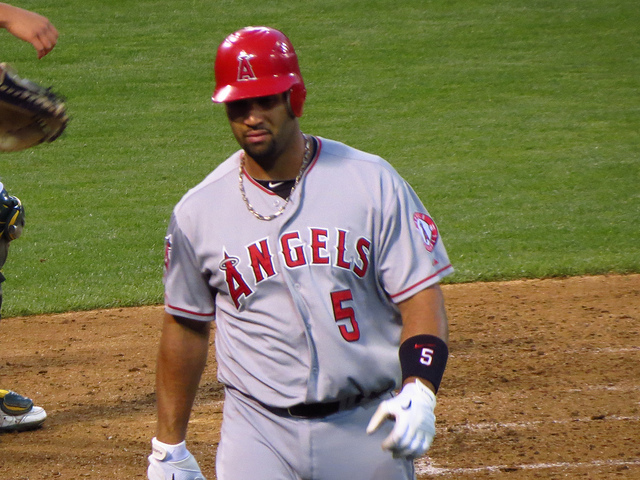
One of the hallmarks of greatness is when your choices on similarity comparisons are limited. Everyone knows Albert Pujols is the greatest living first baseman. We could compare him to the two other possible players with him in that stratosphere, but everyone gets dwarfed by Lou Gehrig, and we really want to compare him to a closer contemporary. We realize that the index is not that close, but this comparison highlights another problem that Pujols’ career presents.
In short, is he adding to or detracting from his legacy by continuing to play? Let’s say he finishes out his contract. He could add 30 home runs, 200 hits, maybe 120 runs scored, and 150 RBI. He might approach the top ten in hits, he will be in the top five in home runs, RBI, and he will approach the top ten in runs scored. So, there is some value to continuing. However, since 2015 he has amassed 0.9 BWAR. His FWAR scores are even worse. So, he’s not exactly adding value. It gets worse when we look at the offensive value numbers.
So, when comparing him to the two players we picked you have to consider not only the index but also the other tests we have. These comparisons are always complex and have a number of factors. What makes Pujols different than the others (including Gehrig) is the longevity. He has only one season with fewer than 117 games played. That’s remarkable in 19 seasons.
Career Value
| BWAR | FWAR | WS/5 | Total | |
| Albert Pujols | 100.8 | 87.7 | 97.4 | 285.9 |
| Jimmie Foxx | 93.9 | 101.8 | 87.0 | 282.7 |
| Jeff Bagwell | 79.9 | 80.2 | 77.4 | 237.5 |
It seems odd to put Bagwell in this group, but it will make more sense when we get to the offensive and fielding numbers. Pujols will be the second most valuable first baseman in history according to the index. There is very little drama there. Foxx will be third no matter what. Bagwell’s place depends on how you want to handle the 19th century guys. Guys like Dan Brouthers have superior scores, but it is fair to question the quality of play back then. If you eliminate the 19th century guys he is solidly top five in history.
However, this is where the different tests come in. Bagwell’s career was tragically cut short by an arthritic shoulder (actually both of them). So, his career lasted “only” 15 years when he might have been able to play 18 or 19 normally. We can’t give him credit for performances he never had, but we can compare them on a per season basis and certainly in peak value.
Foxx was not an injury causality in the same sense. He was more of an alcohol causality. By the time he was in his early thirties he was virtually done. Given the early portion of his career, he would have put up Pujols numbers if he had taken better care of himself. We can play the what if game or we can look at peak value.
Peak Value
| BWAR | FWAR | WS/5 | Total | Index | |
| Pujols | 81.3 | 77.5 | 69.4 | 228.2 | 514.1 |
| Foxx | 73.3 | 78.0 | 63.6 | 214.9 | 497.6 |
| Bagwell | 63.4 | 64.1 | 59.0 | 186.5 | 424.0 |
Again, Bagwell isn’t quite as good. Are only recourse would be to substitute Gehrig for Bagwell, but we would be comparing Pujols to two pre World War II players. It is fair to say that both Foxx and Bagwell were as good if not better than Pujols when they were at their best, but clearly Pujols matched longevity and durability to consistently produce high value numbers.
Pujols peak value is cemented in stone, so he can only improve on his career value. Since that is the case there is very little chance of him catching Gehrig. For those that focus on offensive numbers, they might be wondering why we have Bagwell here and not Frank Thomas. That will become abundantly clear when we look at the offensive and fielding numbers.
Offensive Numbers
| OPS+ | Rbaser | OW% | wOBA | |
| Foxx | 163 | -9 | .780 | .460 |
| Bagwell | 149 | 31 | .722 | .405 |
| Pujols | 147 | 8 | .686 | .388 |
In economics there is a term called the law of diminishing returns. The same happens in baseball. Pujols may be able to lift his performance to average and add career value in the last two seasons of his contract. Unfortunately, that will only serve to lower his place here. In his prime, there was nothing he couldn’t do on a baseball field. He was similar to Bagwell in that respect. They both ran the bases better than most, but Pujols has been slowed for much of the last decade by a bad heel. He has been -9 in Rbaser since 2012. That likely won’t improve in 2020 and 2021.
Foxx is obviously on another level and most comparable to Gehrig. The aforementioned Thomas had a 156 OPS+ and a .732 offensive winning percentage, so you could argue that he was a superior offensive player to Bagwell, but his value gets undercut when we move to the fielding side of the equation.
Fielding Numbers
| Rfield | DWAR | TZ1B | DWS/5 | |
| Pujols | 144 | -2.2 | 65 | 8.8 |
| Bagwell | 54 | -7.2 | 58 | 6.5 |
| Foxx | 19 | -5.9 | 21 | 9.2 |
In the prime of his career, there was a commercial campaign that highlighted the stars of the game. It talked remembering a time when you saw the speed of this player or the power of that player. It simply asked, “do you remember when you saw Pujols do everything?” I could say the same watching Bagwell through the years. There was nothing either of them couldn’t do on a baseball field. This is why Bagwell is here and not Thomas.
Pujols is DHing these days, so these numbers aren’t going to get any better. His DWAR will only get worse the more time he spends in the dugout with a bat in his hand. So, the ultimate question is whether you remember these guys in their prime or how they finished. A part of that image comes from their performance in the playoffs.
Playoff Performance
| PA | Slash | HR | Runs | RBI | |
| Pujols | 334 | .323/.431/.599 | 19 | 55 | 54 |
| Bagwell | 129 | .226/.364/.321 | 2 | 11 | 13 |
| Foxx | 73 | .344/.425/.609 | 4 | 11 | 11 |
I could offer up a number of excuses for Bagwell’s postseason performance but it would ring hollow. You really can’t sugarcoat these numbers. Meanwhile, Pujols is among the all-time leaders in postseason home runs. Manny Ramirez has a remarkable 29 postseason home runs, but Pujols has more than Reggie Jackson and David Ortiz. It’s all a part of the image that he has been able to engineer for himself. Sadly, he likely won’t be getting more opportunities.
Foxx played on one of the greatest teams in baseball history (and probably my favorite dynasty). He had support from Hall of Famers Mickey Cochrane and Al Simmons. You had very good hitters like Mule Haas and Max Bishop as well. That’s something Bagwell never had in his prime. He had Craig Biggio and not much else until it was too late for him to capitalize. Still, you are responsible for the numbers you produce.
BWAR MVP Points
| Top 10 | Top 5 | MVP | Points | |
| Pujols | 2 | 2 | 6 | 76 |
| Foxx | 1 | 4 | 3 | 53 |
| Bagwell | 2 | 2 | 2 | 36 |
I would point out the obvious that Jimmie Foxx had to compete with the likes of Gehrig, Babe Ruth, Ted Williams, and Joe DiMaggio in the beginning or the end of his career. That doesn’t even mention Hank Greenberg or other excellent players. Bagwell had to compete with players like Barry Bonds, Sammy Sosa, and Chipper Jones. So, it would be easy to discount Pujols’ numbers here, but that would be a huge mistake.
He was clearly the best player in the National League for a ten year period. All of those top ten finishes came in a Cardinals uniform. His contract in Anaheim might be one of the biggest cautionary tales in free agency history. He simply hasn’t been anywhere close to the same player he was. Furthermore, he likely will trail Mike Trout in MVP points when all is said and done and he historically trails guys at other positions. Still, we can enjoy watching a living legend a little while longer assuming baseball ever comes back.


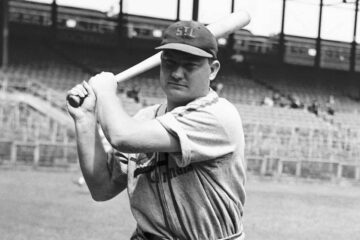
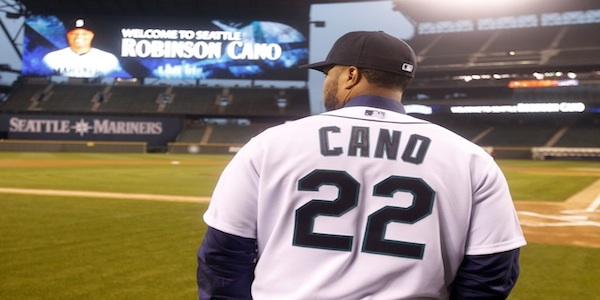
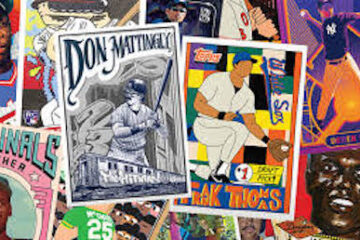
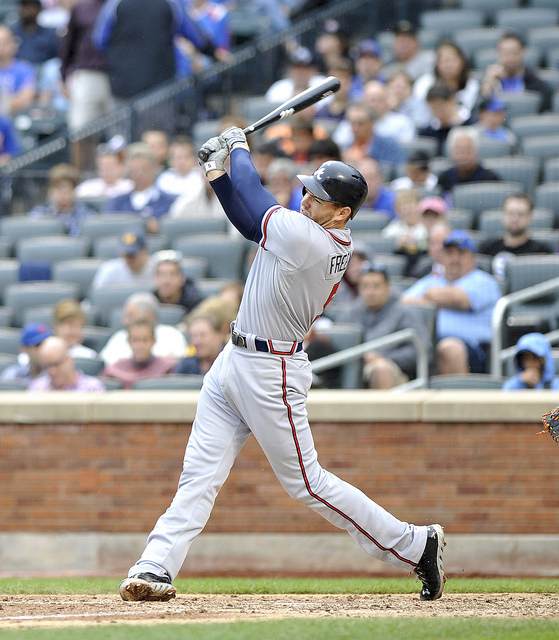
1 Comment
I think that Foxx was better than Gehrig. XX was the first to win 2 MVP’s and the first to win 3 MVP’s. By today’s rules, he would have also won the 32 Triple Crown, as the bat title leader didn’t have enough AB’s. Foxx was a better fielder than Gehrig, and could play other positions. Gehrig was generally on better teams, and had more chances to post big numbers. Shibe was a big park, so there were no cheap homers there. Lefties in Yankee Stadium had the short porch in RF to shoot for. Therefore, the numbers don’t tell the whole story!